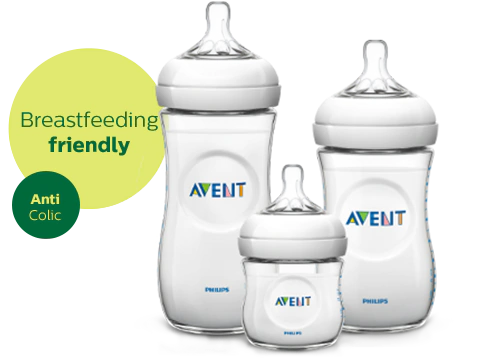How To Choose A Bottle For Your Baby? Here Are My Tips.

Choosing your baby’s bottle can be a tricky task to do. It personally got me so confused while I was pregnant, as the market was flooded with several brands and types of bottles.
Therefore, today I will help you make the smart choice for your and your baby’s sake.
To watch the full video, click on this link
What’s the criteria to choose my baby’s bottle?
Generally, there are 3 things to look for that could help you
- First of all, choose a safe bottle for your baby. By this, I mean a bottle that’s made up of safe materials, like glass or BPA-free plastic. Studies show that BPA chemical has several negative effects on your baby’s health, which is why several manufacturing companies are excluding it from babies’ bottles.
- Second, choose a practical bottle, which is easy to hold and clean.
- Third, choose the type of bottle your baby accepts and would like.
Types of bottles
There are many bottles in the market. I recommend buying 1 of each and trying it before buying a set of the bottles. Below are some common ones:
1- Classic bottles.

2- Natural bottle (looks closer to the breast and better for breastfeeding babies). The natural bottle has a wider diameter, which makes it closer in shape to a mom’s breast. Often the tip is made up of softer and more natural material, which makes it easier for your baby to transition from breastfeeding to bottle-feeding.

How to choose your baby’s bottle size?
There are different bottles in the market whose capacity range between 60 ml and 330 ml. Generally, moms go for the 120 or 260 ml bottle, as they are most convenient and suitable for babies of all ages. As for smaller bottles, like 60 ml bottles, these are no longer used beyond the 1 month of age and can be a waste of money. I also don't recommend 330 ml bottles and above as most kids don't need that much per meal ever.
What about the nipple size?
This is one of the most important aspects of your baby’s bottle. Truth is, no matter what size of bottle you end up choosing, the nipple size should be changed as your baby grows. Ideally, when the baby is below 1 month of age, the smallest nipple is most recommended, to avoid suffocation, gases, and preferring the bottle over the mom’s nipples.
As the baby grows, you can gradually increase the nipple size as long as your baby is ready. However, if you noticed that your baby is comfortable in the small nipple size, then there’s no need to change that. After the age of 3 months, not only does the nipple size change, but also the type of nipple- known as the variable flow nipples- changes, which allows you to provide your baby with denser liquids. In my experience most babies don't need variable flow nipples.
What if I’m pumping milk or giving my baby formula?
This is a very important question. First of all, it is very important to exclusively breastfeed your baby during his first 6 weeks before giving him a bottle to avoid nipple confusion.
Then, bottles are your best method to provide your baby with your pumped milk. You should introduce them through an easy transition, using similar methods to breastfeeding. This means ensuring adequate amounts of milk in the bottle, adopting a horizontal angle while feeding, and ensuring your baby isn’t intaking more than he needs. Give your baby 100 ml of milk with pauses in between to avoid gassiness, digestion problems, and bottle preference. You can also test different nipple and bottle sizes to deduce what best suits your baby.

I hope this was helpful!
To watch the full video, click on this link
Mirna Sabbagh, an adult and child dietitian, nutritionist, and lactation consultant. She also has several digital courses: Pregnancy Nutrition Course, breastfeeding course, starting solids 6-12 months course, and also child nutrition for all children including picky eater, that you can sign up for from the comfort of your home.
The courses are pre-recorded. As soon as you make the course purchase, you will receive a link to watch the course from your phone or laptop.
You can also e-mail Mirna for questions at info@mirnaelsabbagh.com
Mirna is no longer doing consultations. Her online courses and webinars cover 95% of parents' common concerns.
